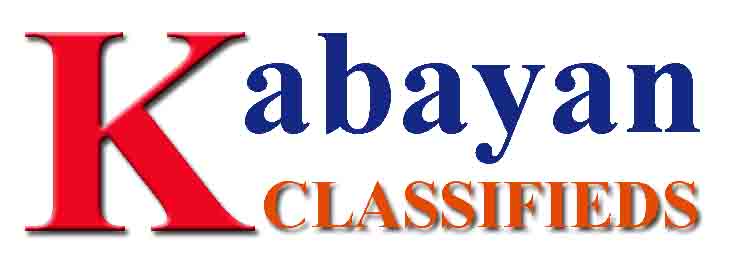We’ve all struggled at some point, haven’t we? When we attempt to balance a clock that never stops ticking while managing an ever-growing list of responsibilities? For those in management, particularly in HR roles, navigating the complexities of employee time and attendance can feel like a challenging yet essential task. So, posed to you, who are constantly striving for efficiency and accuracy, shedding light on this topic becomes a necessity, doesn’t it? In the subsequent passages, we will unravel this complex issue and offer some practical and innovative solutions.
Imagine this familiar scenario: It’s Monday morning, and you are standing by your office coffee machine recapping the weekend’s highlights. Suddenly, you are interrupted by a team member inquiring about a discrepancy with their apparently perfect punch-ins and outs, leading to incorrect pay. Sounds familiar, right? Allow the forthcoming section to bring forward the common challenges faced in employee time and attendance management and how to overcome them.
Stay with us as we dive into a thorough analysis of the intricate aspects of time management, the various tools and strategies available in today’s technologically advanced world, and the potential opportunities and pitfalls of such an essential part of business operations. Embark on this journey and discover the path to an improved and efficient time and attendance management system.
The “Why”: Why Employee Time and Attendance Management Matters
In an era where time is indeed money, efficient employee time and attendance management acts as the cornerstone of an effective and productive organization. Poor time tracking and inaccurate attendance records can result in unhappy employees, compliance issues, and, most importantly, unnecessary loss of revenue.
Digging deeper into the “why”, there’s more to efficient time management than just saving money. A well-organized system ensures transparency and fairness in pay and promotes accountability among employees. A smooth, glitch-free, attendance management program keeps the workforce engaged, motivated and increases job satisfaction, fostering a positive work culture.
Lastly, compliance can’t be overlooked. Whether it’s meeting the Fair Labor Standards Act (FLSA) regulations or adhering to state or national labor laws, adhering to the ‘legalities’ preserves a company’s integrity and saves them from potential lawsuits or penalties.
The “What”: Identifying the Challenges
Once aware of the importance of efficient employee time and attendance management, understanding the impediments in this path becomes crucial. Charting out the common challenges helps in strategizing the solutions effectively.
For starters, manual time tracking tops the list. Even in our technologically-driven era, some companies rely on old-fashioned, inaccurate, and time-consuming methods. This leads to miscalculations, errors in pay distribution, and numerous other difficulties.
Next up, buddy punching, a disturbing trend in many organizations, distorts the integrity of time management. This occurs when an employee clocks in or out on behalf of their coworker, creating misleading data and causing financial drain.
Lastly, the lack of automated updates and real-time data poses another significant challenge. The absence of immediate updates and access to real-time data prevents managers from planning, organizing, and managing their employees effectively.
The “When”: Time to Embrace Technology
The “when” unfolds the urgency of implementing efficient time and attendance tools in an organization. Derived from the challenges, the time to embrace progressive technology is now. “When” is no longer a question; it’s an imperative.
Embracing digital platforms and ditching outdated, manual systems can streamline the employee time and attendance management process. Implementing automated time-tracking solutions can maximize productivity, reduce human errors and ensure accuracy.
Additionally, technology aids in curbing buddy punching. Biometric systems, facial recognition, or personal identification number (PIN) based systems can mitigate such unethical practices.
Real-time data and automated updates are no more ‘nice-to-haves.’ Comprehensive software can provide instant access to data, enabling managers to make informed decisions quickly.
The Pros and Cons of Top Time and Attendance Tools
Introducing technology brings about monumental changes. While it offers potential benefits, it also carries certain drawbacks. Here, we explore the pros and cons of modern employee time and attendance tools.
The pros first. Automated tools offer ease and efficiency. Reduction in errors, time-savings, and employee satisfaction comes along with the package. Biometric systems deter unethical practices, and real-time data aids in agile decision making.
On the flip side, the cons. Although the benefits outweigh the drawbacks, certain aspects can’t be ignored. Training employees to use new tools might be time-consuming, and some employees might resist the change. Moreover, privacy issues concerning personal data might arise.
Ensuring A Smooth Transition: Implementing Change Effectively
Change can be daunting, but it does not have to be disruptive. Here, we address how to manage a smooth transition from traditional methods to technologically advanced systems.
Firstly, organizing a comprehensive training program ensures employees are well-versed with the new system. Creating a feedback loop will help in addressing their concerns and adapting the system to their needs.
Transparency must be maintained, clear guidelines should be set, and importance should be given to employee privacy concerns. Adequate emphasis on the benefits of the change and reassuring employees about their privacy and data utilization can ease their apprehensions.
Final Thoughts: The Right Time Is Now
The efficient management of employee time and attendance is no longer a choice but a necessity for organizations. Struggles with manual tracking, buddy punching, and lack of real-time data can and should be met head-on with the help of advanced time and attendance tools.
Yes, change can be overwhelming, and every technology has its own set of strengths and weaknesses. However, the benefits of automation, the elimination of human errors, and increased transparency vastly overshadow the cons.
Organizations need to embrace this change, investing in training, communication, and transparency to ensure a seamless transition. Even though hurdles may pop up along the path, ultimately, it’s a venture into a world of better efficiency and productivity. The right time is now. Make every second count!
![]()

No Comment Found.